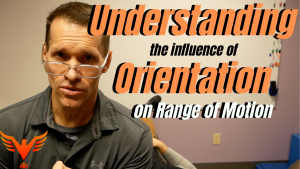I get a lot of questions as to how I interpret table tests, and how I relate the results of them to representations of the archetypes, symmetry or asymmetry, and what interventions are best. Your chessboard (the compilation of all your table measures) produces a 4D representation of your client in space. This guides your […]
posterior orientation
Bill Hartman’s Weekly Q & A for The 16% – December 22, 2019
Bill Hartman’s Weekly Q & A for The 16% – December 22, 2019 This week on YouTube: Bill Hartman’s Weekly Q & A for The 16% – December 15, 2019: The IFAST Podcast #7 – The what, why and how of continuing education: https://youtu.be/ltw_swOprj4 Understanding the Influence of Orientation on Range of Motion: https://youtu.be/mpmS5ubWjVw This […]
Understanding the Influence of Orientation on Range of Motion
The orientation of the pelvis and thorax influence the shape of the axial skeleton as well as the position of the glenoid and the acetabulum. This, in turn, influences muscle orientation and action to produce the available range of motion that is available during movement or table tests. In this video, manipulate the Padawan’s position […]


